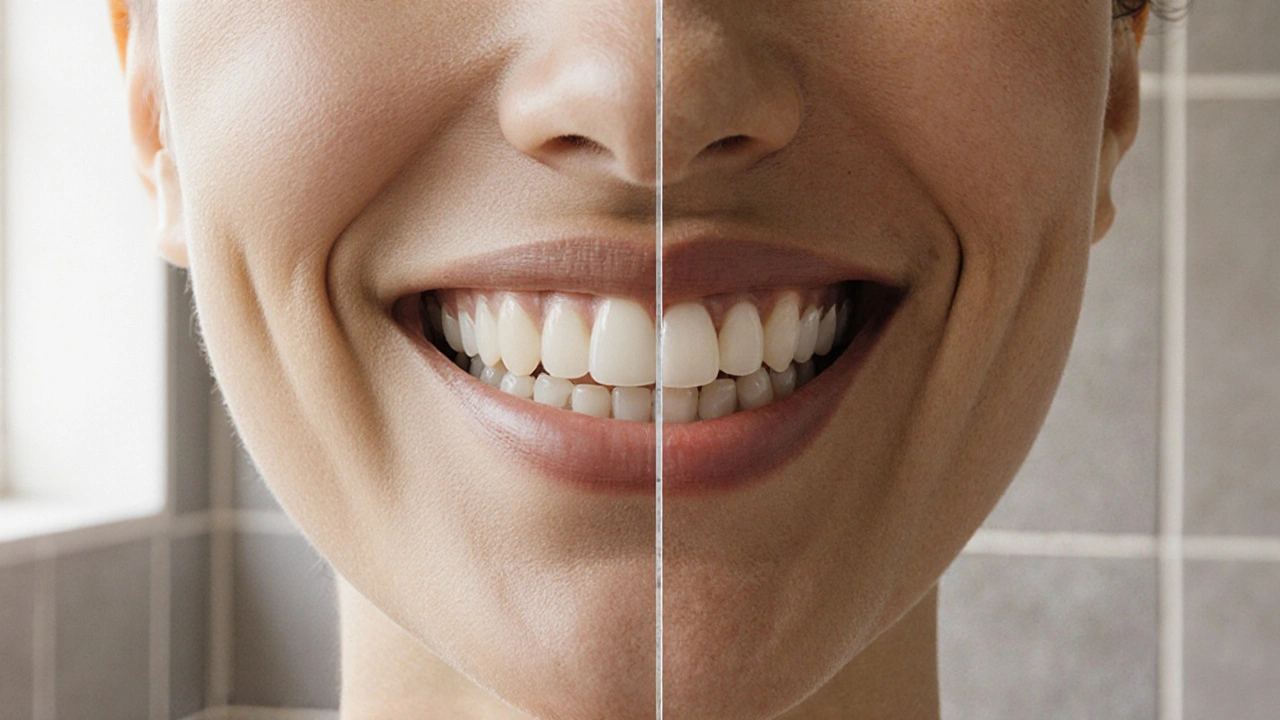
Jak dlouho trvá bělení zubů? Praktický průvodce bělícími pásky
Zjistěte, jak dlouho trvá bělení zubů, jak fungují bělící pásky, jak je správně používat a jak předejít citlivosti.
When talking about citlivost po bělení, bolest a nepohodlí, které se objeví po aplikaci bělících prostředků na zuby. Also known as post‑bleaching sensitivity, it usually lasts from a few hours to several days. The condition is tightly linked to bělení zubů, proces, při kterém se používá peroxid vodíku nebo peroxidu urey ke zvyknutí povrchu skloviny and to the broader phenomenon of zubní citlivost, reakce dentinu na teplotní, chemické nebo mechanické podněty. During bleaching, the peroxide penetrates enamel, oxidizes pigments and temporarily enlarges the dentin tubules. This structural change allows stimuli to reach the nerve fibers more easily, which is why many people feel a sharp sting when eating hot or cold foods. In short, citlivost po bělení encompasses a chemical reaction, an anatomical shift, and a sensory response, creating a perfect storm for discomfort.
One semantic triple here: Citlivost po bělení vzniká v důsledku exponovaného dentinu. Another: Bělení zubů vyžaduje použití peroxidu vodíku. A third: Dentální hygiena snižuje riziko citlivosti. The primary cause is the increased permeability of dentin tubules caused by the oxidizing agents in bělící gel. Higher concentration gels (30 % a více) amplify the effect, especially if the enamel is already thin due to erosion or previous restorations. Age is another attribute – older patients often have more exposed dentin. Lifestyle factors such as frequent consumption of acidic drinks or aggressive brushing also play a role, because they pre‑weaken the enamel barrier. Finally, the duration of the bleaching session matters: longer exposure means deeper penetration and a higher chance of sensitivity.
So, how can you keep the bright smile without the burning sensation? First, choose a product with a lower peroxide concentration (10–15 %) and follow the recommended application time. Second, use a desensitizing toothpaste that contains potassium nitrate or stannous fluoride – these ingredients block the tubules and calm the nerves. Third, maintain good dentální hygiena: soft‑bristled brush, fluoride‑rich mouthwash, and avoiding overly abrasive toothpastes. If sensitivity persists, a short course of professional fluoride varnish can seal the dentin temporarily. Some dentists also recommend a brief pause between bleaching sessions to let the teeth recover. By understanding the link between bělení zubů, zубní citlivost a vašimi denními návyky, můžete předejít nepříjemným pocitům a užívat si výsledky dlouhodobě.
In the list below you’ll find articles that dive deeper into specific aspects: price of dental treatments, how to handle post‑extraction pain, ways to mask cavities, and many more. Each post expands on the topics we just introduced, offering detailed advice, practical tricks, and answers to common questions. Pokračujte dál a objevte konkrétní tipy, které vám pomohou zvládnout každou situaci spojenou s ústní péčí.

Zjistěte, jak dlouho trvá bělení zubů, jak fungují bělící pásky, jak je správně používat a jak předejít citlivosti.